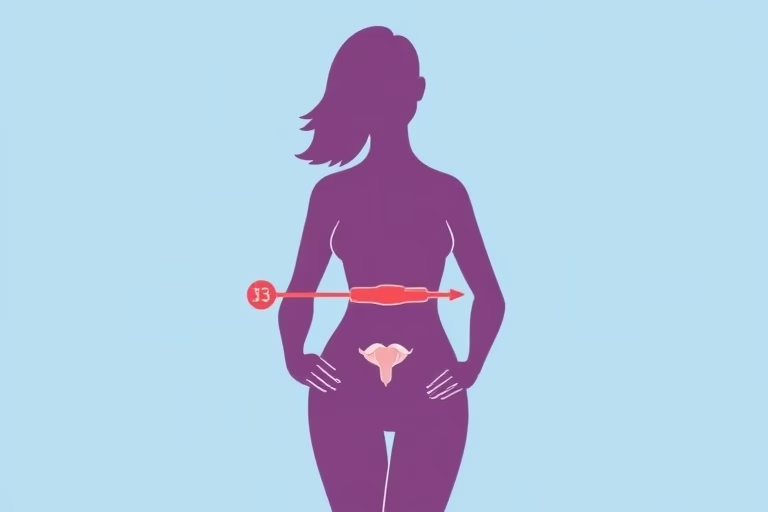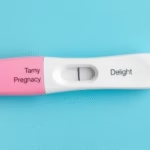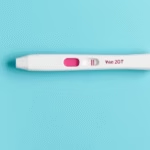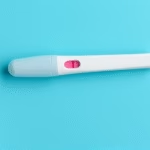Understanding Implantation Bleeding and Its Difference from Menstrual Periods
In this article, we will talk about how to recognize implantation bleeding vs. period. It is essential for women to understand the differences between these two types of bleeding. Implantation bleeding refers to light spotting or bleeding that can occur when a fertilized egg attaches itself to the lining of the uterus. This process usually takes place around six to twelve days after conception. In contrast, a menstrual period is the monthly shedding of the uterine lining when pregnancy does not occur, typically lasting from three to seven days. Recognizing the differences between implantation bleeding and a regular period can help women identify early signs of pregnancy. The timing, color, duration, and accompanying symptoms can help distinguish between the two events.
What is Implantation Bleeding?
Implantation bleeding occurs in the early stages of pregnancy. It is characterized by light spotting rather than full-fledged bleeding. When a fertilized egg implants into the uterine lining, some blood vessels may break, leading to this light bleeding.
This bleeding may be pink or brownish in color, differing from the bright red shades often associated with menstrual bleeding. Typically, implantation bleeding lasts for a few hours to a couple of days, which is shorter than a regular period.
If you notice slight spotting about a week to two weeks before your expected menstrual period, it might be implantation bleeding, signaling the potential onset of pregnancy.
Understanding Your Menstrual Cycle
The menstrual cycle is a complex process driven by hormonal changes that prepare your body for pregnancy. A typical menstrual cycle lasts around 28 days, but it can vary from 21 to 35 days among different women. It consists of several phases:
- Menstrual Phase: This is when the lining of the uterus sheds, resulting in menstruation.
- Follicular Phase: The pituitary gland releases hormones, stimulating the ovaries to produce follicles and eggs.
- Ovulation: Typically occurs around day 14, where a matured egg is released from the follicle.
- Luteal Phase: Following ovulation, hormone levels rise, preparing the uterus for possible implantation.
When no fertilization occurs, hormone levels drop, leading to the shedding of the uterine lining and the start of your next period.
When Does Implantation Bleeding Occur?
Implantation bleeding generally occurs between 6 to 12 days post-ovulation. If you conceive, this is usually one week before your expected period. The timing can significantly help in recognizing whether the bleeding is related to implantation or your menstrual cycle.
Many women may mistake this early spotting for an upcoming period due to its timing. Paying attention to your cycle and noting any changes can assist in determining the cause of any unexpected bleeding. Tracking your cycle can be very useful for anyone actively trying to conceive.
Physical Characteristics: Color and Consistency
The color and consistency of the bleeding can offer clues distinguishing implantation bleeding from menstruation. Implantation bleeding often appears as:
- Light Pink or Brown: Typically, the color tends to be lighter than menstrual blood, which is usually bright red.
- Spotting: This is usually very light, often requiring only a panty liner rather than a pad or tampon.
In contrast, menstrual bleeding usually has a bright red appearance, can be heavy at the beginning, and may include blood clots. It is essential to monitor these characteristics to help determine the bleeding’s nature.
Duration: How Long Does It Last?
Implantation bleeding is usually brief, lasting anywhere from a few hours up to a maximum of three days. In comparison, menstrual periods last longer, generally from three to seven days. The duration of bleeding is a key factor in recognizing whether the bleeding is implantation or the beginning of menstruation.
If you notice unusual light spotting for a short duration followed by a more extended period of no bleeding, it may suggest implantation. However, if the bleeding continues for several days, it is more likely to be a menstrual period.
Accompanying Symptoms: What to Expect
Alongside bleeding, the accompanying symptoms can provide additional context for recognizing implantation bleeding vs. a menstrual period. Symptoms linked with implantation might include:
- Mild Cramps: Some women experience light cramping, which can occur during implantation.
- Mild Back Pain: Low back discomfort may also occur during this early phase.
- Breast Tenderness: Hormonal changes can lead to tenderness, similar to premenstrual symptoms.
These symptoms may also occur during menstruation, but the intensity often differs. If the symptoms are mild and coincide with light spotting, it could lean more towards implantation.
Testing for Pregnancy: When and How to Test
If you suspect you are experiencing implantation bleeding, you may want to take a pregnancy test. The best time to test is after you have missed your expected period. Home pregnancy tests work by detecting the hormone human chorionic gonadotropin (hCG) in your urine, which is produced after a fertilized egg implants in the uterus.
Most tests are accurate if taken on or after the first day of a missed period. If you test too early, there is a risk of false negatives. If you suspect implantation bleeding yet receive a negative test, consider waiting a few days and testing again.
Consulting a Healthcare Professional
If you experience irregular bleeding, it is essential to consult with a healthcare professional. Instances of heavy bleeding, severe cramps, or bleeding outside of a normal menstrual cycle can indicate various health issues.
In case of potential pregnancy or any concerns about your menstrual cycle, a healthcare provider can offer guidance and advice tailored to your health history. Seeking timely advice can help ensure proper treatment and peace of mind.
Final Thoughts
Recognizing implantation bleeding vs. period is an essential skill for women who want to track their fertility or recognize early signs of pregnancy. Understanding the characteristics of each can be crucial for fertility awareness and proactive health management.
While implantation bleeding typically occurs around a week before your expected menstruation, it is lighter, shorter in duration, and may not require full menstrual protection. Conversely, menstrual bleeding shows a distinct pattern in color, duration, and accompanying symptoms.
If you suspect pregnancy following any unusual bleeding or experiences, utilizing a pregnancy test after your missed period can offer clarity.
Consult with your healthcare provider for more personalized insights or any concerns regarding your menstrual cycle. Awareness and understanding of your body are fundamental in managing your reproductive health effectively.
In conclusion, understanding the signs can ease anxiety and pave the way for informed decisions regarding your reproductive health.
- What is implantation bleeding?
Implantation bleeding is light bleeding that occurs when a fertilized egg attaches to the uterine lining. - How long does implantation bleeding last?
Implantation bleeding usually lasts from a few hours to three days, significantly shorter than a menstrual period. - How can I differentiate between implantation bleeding and my period?
Look for lighter color, shorter duration, and milder symptoms in case of implantation bleeding. - When should I take a pregnancy test?
The best time to take a pregnancy test is after the first day of your missed period for optimal accuracy. - Is it necessary to consult a doctor?
Consult a healthcare provider if you experience irregular bleeding or have concerns about your menstrual cycle.
Further Reading
What Type of Psychotherapy Is Best for Anxiety?







